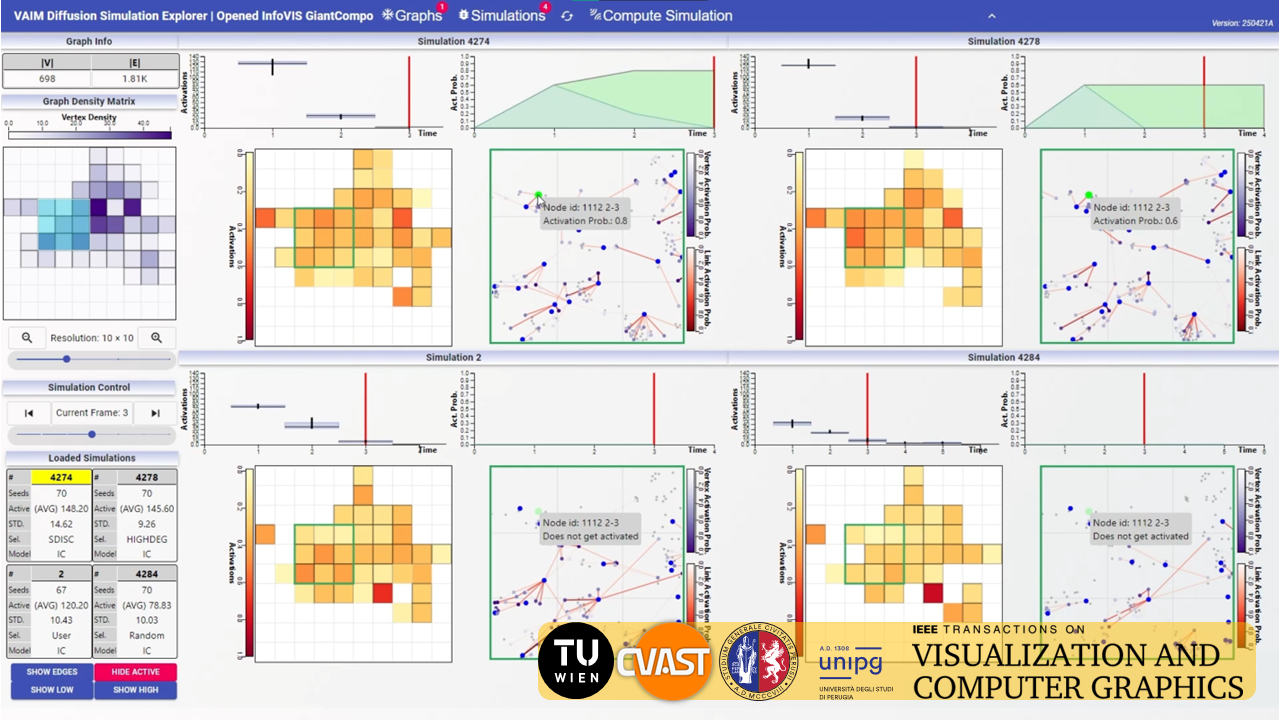Influence Maximization with Visual Analytics
Alessio Arleo, Walter Didimo, Giuseppe Liotta, Silvia Miksch, Fabrizio Montecchiani
DOI: 10.1109/TVCG.2022.3190623
Room: 105
2023-10-25T05:21:00ZGMT-0600Change your timezone on the schedule page
2023-10-25T05:21:00Z

Fast forward
Full Video
Keywords
Information visualization;visualization systems and software;influence maximization;visual analytics;information diffusion
Abstract
In social networks, individuals’ decisions are strongly influenced by recommendations from their friends, acquaintances, and favorite renowned personalities. The popularity of online social networking platforms makes them the prime venues to advertise products and promote opinions. The Influence Maximization (IM) problem entails selecting a seed set of users that maximizes the influence spread, i.e., the expected number of users positively influenced by a stochastic diffusion process triggered by the seeds. Engineering and analyzing IM algorithms remains a difficult and demanding task due to the NP-hardness of the problem and the stochastic nature of the diffusion processes. Despite several heuristics being introduced, they often fail in providing enough information on how the network topology affects the diffusion process, precious insights that could help researchers improve their seed set selection. In this paper, we present VAIM, a visual analytics system that supports users in analyzing, evaluating, and comparing information diffusion processes determined by different IM algorithms. Furthermore, VAIM provides useful insights that the analyst can use to modify the seed set of an IM algorithm, so to improve its influence spread. We assess our system by: (i) a qualitative evaluation based on a guided experiment with two domain experts on two different data sets; (ii) a quantitative estimation of the value of the proposed visualization through the ICE-T methodology by Wall (IEEE TVCG - 2018). The twofold assessment indicates that VAIM effectively supports our target users in the visual analysis of the performance of IM algorithms.